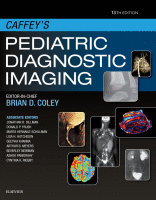Physical Address
304 North Cardinal St.
Dorchester Center, MA 02124

Overview The spleen is an intraperitoneal organ supported by the gastrosplenic ligament and the splenorenal ligament ( Fig. 94.1 ). Other ligaments that help support the spleen are the phrenicosplenic, splenocolic, pancreaticosplenic, phrenocolic, and pancreaticocolic. The spleen is the largest…

Overview The first liver transplantation was performed in 1963, with posttransplant survival reaching 1 year in 1968. Subsequent use of immunosuppressants such as cyclosporine and tacrolimus, coupled with improved surgical techniques, has resulted in 1-year survival rates exceeding 90%. The…

Vascular abnormalities of the liver discussed in this chapter are divided into the following broad categories: portal hypertension, hepatopulmonary syndrome (HPS), Budd–Chiari syndrome, sinusoidal obstructive syndrome, and congenital vascular anomalies of the liver. Portal Hypertension Overview. Portal hypertension is defined…

Overview Hepatic neoplasms constitute approximately 2% of all childhood tumors, approximately 6% of pediatric abdominal neoplasms, and are the third most common intra-abdominal tumors in children after Wilms tumor and neuroblastoma. Two-thirds of liver tumors in children are malignant and…

Introduction A wide range of viruses, bacteria, fungi, and parasites can infect the liver. The liver can be the primary organ of infection (as seen with viral hepatitis), or the liver can be secondarily involved as part of a systemic…

Introduction Imaging plays a central role in the initial assessment and serial monitoring of chronic pediatric liver disease. While liver biopsy remains the accepted gold standard test for diffuse parenchymal liver disease, a single biopsy specimen only samples 1/50,000 or…

Cholelithiasis and Choledocholithiasis Overview. Cholelithiasis, previously thought rare in children without hemolytic anemia, is diagnosed with increasing frequency since the increased ultrasound use. Gallstones have been reported in the fetus, although most resolve spontaneously. Development of gallstones in infants may…

Introduction Hepatorenal fibrocystic disorders are a group of associated congenital anomalies of the liver and kidney caused by malformation of the embryonic ductal plates formed by bipotential progenitor hepatoblasts surrounding portal venous ramifications ( Fig. 87.1 ). They include choledochal…

Peritoneal Cavity Overview. The peritoneum is a thin serosal membrane of mesodermal origin that comprises a single layer of mesothelial cells resting on a basement membrane. It is divided into visceral and parietal components, and the space between the two…

Overview Fetal abdominal abnormalities evaluated on prenatal imaging can be grouped into one of several general categories: obstructions, ventral wall defects, echogenic bowel and peritoneal abnormalities, and finally masses and solid organ abnormalities. In circumstances when ultrasound (US) cannot accurately…